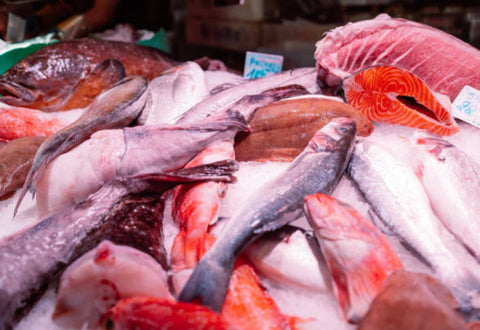When you think of frozen fish, convenience and price usually come to mind. But what about quality, safety, and the origin of the fish you're buying? In Singapore, where seafood is a staple, knowing where your frozen fish comes from and how it's processed makes a real difference.
Vietnamese Fish: Why Caution Is Warranted
Vietnam is a major exporter of frozen seafood products, including popular varieties like pangasius (also known as basa fish), tilapia, and catfish. These options are often cheap and widely available in supermarkets and foodservice channels. But here’s the thing: the low price comes with certain risks.
To keep fish looking fresh during transport and storage, some processors use excessive additives, including chemical agents to prevent fungus and extend shelf life. These may include phosphates and other preservatives, which can alter the texture and taste of the fish. In some cases, there's even concern over illegal antibiotics or hormone use during farming.
Not every Vietnamese supplier cuts corners, but the inconsistency in processing standards can be an issue. Unless you trust the brand or know the importer, it's better to be cautious.
So, What’s Safe and Worth Buying?
Here are some frozen fish options that are generally more trusted in Singapore’s market:
1. Norwegian Salmon
A premium choice known for its consistency and clean farming methods. Rich in omega-3s, and flash-frozen for peak quality. Great for sashimi (if sashimi-grade) or grilled.
2. New Zealand Hoki / Cod
Sustainably sourced and usually processed with strict standards. Ideal for baking, pan-frying, or using in soups.
3. Japanese Frozen Fish (e.g., Hamachi, Saba)
Japan’s frozen seafood is well-known for its clean, traceable supply chains. Excellent for grilling or hotpot, with minimal additives.
4. Local or Malaysian Frozen Fish
While less glamorous, local and Malaysian suppliers tend to use fewer preservatives. Snapper, grouper, and mackerel from these sources are good for steamboat, pan-frying, or curry dishes.
How to Identify Better Frozen Fish
-
Packaging: Look for vacuum-sealed packs or fish with minimal ice glazing.
-
Labeling: Check for country of origin, freezing method, and expiry date.
-
Smell: When thawed, fish should smell clean—not sour, metallic, or overly fishy.
-
Texture: Avoid mushy or watery fish; this usually means it's been thawed and refrozen or treated with chemicals.
Cooking Frozen Fish Right
-
Thaw in the fridge overnight instead of at room temperature.
-
Pat dry before cooking to avoid sogginess.
-
Season lightly to let the natural taste come through, especially for better-quality fish.
Avant Marketplace’s Take
At Avant Marketplace, we don't just stock frozen fish—we curate it. From premium sashimi-grade salmon to wild-caught cod and Japanese saba, we focus on traceability, safety, and flavor. Our seafood is chosen with the same care we apply in our chef-led kitchen.
If you’re looking for frozen fish that you can cook confidently at home, visit our retail store or browse our online selection.
Eat better, not just cheaper. Know your fish, and cook with confidence.


